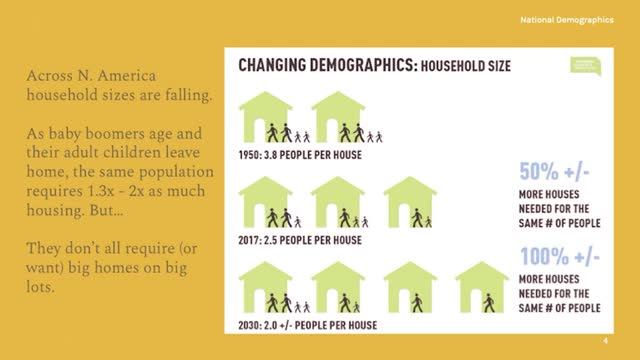Housing Crisis Deepens as Seniors Stay Put
September 30, 2024 | East Lansing, Ingham County, Michigan
This article was created by AI summarizing key points discussed. AI makes mistakes, so for full details and context, please refer to the video of the full meeting. Please report any errors so we can fix them. Report an error »

In a recent government meeting, officials discussed the evolving landscape of housing needs in East Lansing, highlighting a significant demographic shift that has implications for urban planning and zoning. The conversation centered on how housing strategies have historically catered to the baby boomer generation, particularly since the post-World War II era when there was a surge in demand for single-family homes designed for families.
The meeting revealed that East Lansing's demographic profile shows a notably higher percentage of households with roommates compared to other regions, such as Grand Rapids, where only about 10% of households consist of roommates. In contrast, rural areas typically see this figure drop to between 2% and 4%. This trend indicates a growing number of young adults seeking affordable living arrangements, often in shared housing situations.
Officials pointed out that while the proportion of single adults and couples without children aligns with state averages, the presence of empty nesters—older adults whose children have moved out—poses a challenge for younger generations looking to enter the housing market. Many seniors, despite considering downsizing, often choose to remain in their family homes, which can limit availability for younger families eager to purchase homes.
The discussion underscored the need for a reevaluation of housing policies to better accommodate the diverse needs of the community, particularly as younger generations express a desire to establish their own families. The meeting concluded with a call for innovative solutions to address the housing gap and ensure that both seniors and young families can find suitable living arrangements in East Lansing.
The meeting revealed that East Lansing's demographic profile shows a notably higher percentage of households with roommates compared to other regions, such as Grand Rapids, where only about 10% of households consist of roommates. In contrast, rural areas typically see this figure drop to between 2% and 4%. This trend indicates a growing number of young adults seeking affordable living arrangements, often in shared housing situations.
Officials pointed out that while the proportion of single adults and couples without children aligns with state averages, the presence of empty nesters—older adults whose children have moved out—poses a challenge for younger generations looking to enter the housing market. Many seniors, despite considering downsizing, often choose to remain in their family homes, which can limit availability for younger families eager to purchase homes.
The discussion underscored the need for a reevaluation of housing policies to better accommodate the diverse needs of the community, particularly as younger generations express a desire to establish their own families. The meeting concluded with a call for innovative solutions to address the housing gap and ensure that both seniors and young families can find suitable living arrangements in East Lansing.
View full meeting
This article is based on a recent meeting—watch the full video and explore the complete transcript for deeper insights into the discussion.
View full meeting
